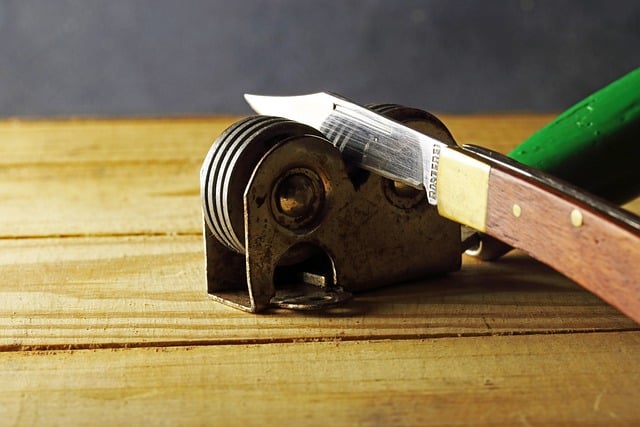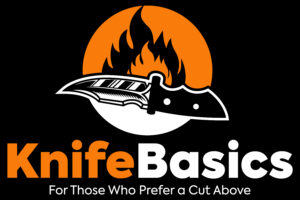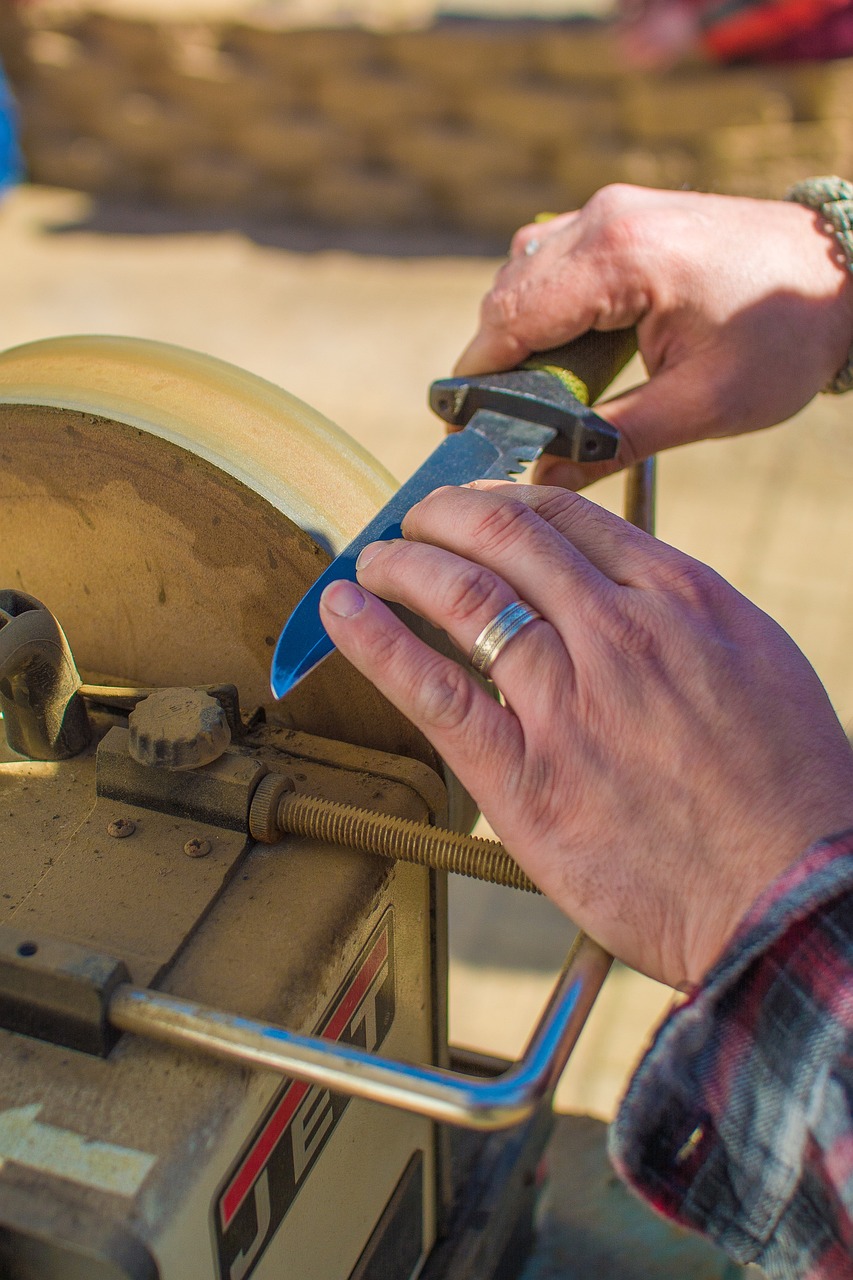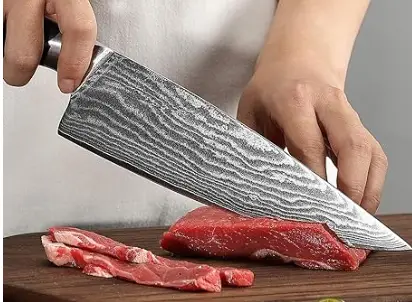Welcome to the exciting world of knife sharpening! Whether you’re a professional chef or a home cook, maintaining the sharpness of your blades is essential for achieving perfect cuts and enjoying a seamless cooking experience. In this article, we will unveil the secrets of knife sharpness and provide you with practical tips on how to keep your blades in prime condition.
Sharpening a knife may seem like a daunting task but fear not! We will guide you through the process step by step, debunking common myths along the way. From understanding the different types of knife sharpeners to mastering the correct angle for sharpening, we’ve got you covered. You’ll discover the importance of honing your knives regularly and learn how to avoid common mistakes that can harm your blades.
Whether you’re a beginner or an experienced sharpener, this article will equip you with the knowledge and techniques needed to achieve razor-sharp results every time. Say goodbye to dull knives and hello to precision cutting with our expert advice. Get ready to unlock the secrets of knife sharpness and elevate your culinary skills to new heights.
The importance of knife sharpness
A sharp knife is essential for efficient and safe food preparation. Dull knives require more force to cut through ingredients, which can lead to slips and accidents. On the other hand, a sharp knife will glide through foods with ease, resulting in clean and precise cuts.
Sharp knives also maintain the integrity of the food, preventing it from becoming crushed or bruised during cutting. This is particularly important when working with delicate ingredients like herbs or fish. A dull knife can also affect the flavor of the food, as it can cause cell damage and oxidation.
In addition, sharp kitchen knives can save you time in the kitchen. A dull knife will require more passes to cut through an ingredient, while a sharp knife can make quick work of the same task. This can be especially helpful when preparing large batches of food or working with tough ingredients like root vegetables.
Understanding knife sharpness: the basics
Before diving into the sharpening process, it’s important to understand the basics of knife sharpness. A sharp knife has a fine edge that tapers down to a point. This edge is created by removing a small amount of metal from the blade, which can become dull over time with use.
There are two main types of edges: straight and serrated. Straight edges are found on most kitchen knives and are used for slicing and chopping. Serrated edges, on the other hand, are found on knives like bread knives and are used for cutting through tough or crusty foods.
It’s also important to note that not all knives are created equal. Different types of knives require different sharpening techniques and angles. For example, a Japanese-style knife will have a different angle than a European-style knife or a benchmade blade. Understanding the specific needs of your knives will help you achieve the best results when sharpening.

Signs of a dull knife
Before sharpening your knife, it’s important to determine if it actually needs to be sharpened. Here are some signs that your knife may be dull:
– Difficulty cutting through ingredients
– Tearing or crushing of food during cutting
– Uneven slices or jagged edges
– More effort required to cut through food
– Blade appears shiny or polished instead of sharp
If you notice any of these signs, it’s time to sharpen your knife.
How to test the sharpness of your knife
There are several ways to test the sharpness of your knife. One common method is the paper test. Simply hold a sheet of paper and try to slice through it with your knife. A sharp knife should be able to cut through the paper cleanly and easily. If the knife struggles to make a clean cut, it’s time to sharpen it.
Another test is the tomato test. Tomatoes are notoriously difficult to slice cleanly, so they make a great test for knife sharpness. If your knife can slice through a tomato without crushing it, it’s sharp enough for most kitchen tasks.
Knife sharpening techniques: honing vs. sharpening
Before sharpening your knife, it’s important to understand the difference between honing and sharpening. Honing is the process of realigning the edge of the blade, while sharpening is the process of removing metal to create a new edge.
Honing should be done regularly to keep the edge of the blade straight. This can be done using a honing steel or rod. Simply hold the steel vertically and draw the blade down the length of the steel at a 20-degree angle, starting at the base of the blade and moving towards the tip. Repeat on the other side of the blade.
Sharpening, on the other hand, should be done only when the knife is dull. This can be done using a variety of tools, including sharpening stones, electric sharpeners, or manual sharpeners. The specific tool you use will depend on your personal preference and the type of knife you are sharpening.
Essential tools for knife sharpening
To sharpen your knife, you’ll need a few essential tools. These include:
– Sharpening stone: A sharpening stone is used to remove metal from the blade and create a new edge. There are several types of sharpening stones, including water stones, oil stones, and diamond stones.
– Honing steel: As mentioned earlier, a honing steel is used to realign the edge of the blade and keep it straight.
– Sharpening guide: A sharpening guide can be used to ensure that you maintain the correct angle when sharpening your knife.
– Electric sharpener: An electric sharpener can make quick work of sharpening your knives, but it may not be suitable for all types of knives.
- 3-Step Knife Sharpener: With our incredible 3-slot system, we’re revolutionizing the art of knife sharpening! The 1st diamond sharpening rod repairs and straightens damaged blades before the 2nd slot sharpens to restore its V-shape. Finally, the 3rd slot fine tunes for a clean polish.
- Easy to Use: Whether you’re right or left-handed, the ergonomic handle allows you to restore your cooking knives in a matter of seconds! Simply place the blade in each of the slots and gently pull the knife through a few times for fast, effective sharpening.
- Cut-Resistant Glove Included: At Kitchellence, we put the safety of our customers above all else. Designed with a non-slip base, our kitchen knife sharpener offers comfortable control while you work. We’re even including a cut-resistant glove for added safety!
- Premium Quality: With our professional knife sharpener kit, you don’t have to be a chef to cook like one! Crafted from solid ABS plastic, it’s strong, durable and designed to last a lifetime. Made with high quality materials, knives will look and work like new.
- Shop Risk Free: We’re so confident that you’ll love our knife sharpening kit, we’re backing each order with our unconditional money back guarantee! If you are not completely satisfied, simply return the product within 30 days and we’ll refund your purchase.
- CONVERT YOUR KNIVES: Ideal for converting traditional 20-degree factory edges of household knives into high performance Trizor XV 15-degree edges
- DIAMONDS: Advanced stropping stage and 100 percent diamond abrasives for sharpening straight edge and serrated blades
- EASY TO USE: Advanced, patented flexible spring guides for automatic adjustment and accurate control of the sharpening angle and feature simple on/off switch
- THREE STAGES: 3-Stage EdgeSelect sharpening system for optimum versatility in providing the perfect edge for each cutting task. Stages 1 and 2 are plated with 100-percent diamond abrasives to sharpen and hone the edge and stage 3 uses a patented flexible abrasive system to polish and help prolong the life of serrated knives
- RAZOR SHARP: The 15 Trizor XV combines the strength and durability of the Trizor edge with the flawless, ultra-sharp 15-degree XV technology. Time Required to sharpen is approximately 1 minute for first time sharpening and resharpening is approximately 10 seconds
- 【Precise Rolling Sharpener】: This rolling knife sharpener features a unique rolling mechanism that ensures consistent contact with the knife edge for uniform sharpening, giving you the advantage of achieving factory-level sharpness in minutes, and the benefit of saving time and effort while maintaining your knives' longevity, ideal for both professional chefs and home users who demand precision and efficiency in their kitchen tools.
- 【5-Angle Adjustment】: With five adjustable angles (12, 15, 17, 19, and 22 degrees), this 5-angle sharpener allows you to customize the sharpening process for different knife types and uses, offering the advantage of versatility from delicate tasks to heavy-duty cutting, and the benefit of optimized performance for various blades such as chef knives, paring knives, and more, ensuring every edge is perfectly honed without guesswork.
- 【Magnetic Knife Holder】: The built-in magnetic knife holder uses strong magnets to securely lock your knife in place during sharpening, providing the advantage of stable and hands-free operation that prevents slips and inaccuracies, and the benefit of safer and more consistent results even for beginners, making this magnetic knife sharpening kit a reliable choice for daily kitchen maintenance and sharpening sessions.
- 【Diamond Ceramic Discs】: Equipped with replaceable diamond and ceramic discs, this sharpener efficiently grinds and polishes knife edges for a razor-sharp finish, with the advantage of durable abrasives that handle tough metals and the benefit of long-lasting performance without frequent replacements, allowing you to maintain sharp knives for slicing, dicing, and other culinary tasks with ease and confidence.
- 【Wood Base Design】: Crafted from high-quality natural wood, the base offers a stable and aesthetic foundation for the sharpening system, giving you the advantage of reduced vibration and enhanced durability during use, and the benefit of a stylish addition to your kitchen workspace that complements other tools, while the ergonomic design ensures comfortable handling for extended sharpening sessions.
Step-by-step guide to sharpening your knife
Now that you have the necessary tools, it’s time to sharpen your knife. Here’s a step-by-step guide to get your knife sharpness the best it can be.
1. Secure the sharpening stone to a flat surface.
2. Determine the correct angle for your knife and adjust the sharpening guide accordingly.
3. Apply a small amount of honing oil or water to the sharpening stone.
4. Place the blade of the knife against the sharpening stone at the correct angle.
5. Using moderate pressure, draw the blade across the stone, moving from the base of the blade to the tip.
6. Repeat on the other side of the blade, maintaining the same angle.
7. Continue sharpening the knife, alternating sides, until you achieve the desired level of sharpness.
8. Hone the knife using a honing steel to realign the edge of the blade.
Knife maintenance tips for prolonged sharpness
To keep your knives sharp for longer, it’s important to take care of them properly. Here are some tips for maintaining the sharpness of your knives:
– Store your knives in a knife block or on a magnetic strip to prevent damage to the blade.
– Avoid putting your knives in the dishwasher, as the harsh detergents and heat can damage the blade.
– Hand wash your knives with warm water and mild soap, then dry them immediately.
– Use a cutting board made of wood or plastic, as hard surfaces like glass or stone can dull your knives.
– Avoid using your knives to cut through frozen foods or bones, as this can damage the blade.
Common mistakes to avoid when sharpening your knife
While knife sharpness can be a straightforward process, there are some common mistakes to avoid. These include:
– Using too much pressure when sharpening, which can damage the blade.
– Sharpening at the wrong angle, which can create an uneven or ineffective edge.
– Not using enough lubricant on the sharpening stone, which can cause the blade to become damaged.
– Over-sharpening the knife, which can shorten the lifespan of the blade.
– Using the wrong type of sharpener for your specific type of knife.
Conclusion: the key to a sharp and efficient knife
In conclusion, maintaining the sharpness of your knives is essential for efficient and safe food preparation. By understanding the basics of knife sharpness and following our expert tips, you can keep your blades in prime condition and achieve razor-sharp results every time. Remember to hone your knives regularly and use the correct tools and techniques for sharpening. With a little practice, you’ll be able to unlock the secrets of knife sharpness and elevate your culinary skills to new heights.
- 【Exclusive Built-in Sharpener】Kitchen knife set with sharpener is amazing. The self-sharpening block keeps the knives razor sharp effectively. It saves you from having to honing blades on a sharpening steel.
- 【Premium Knife Set】Made of forged, high-carbon one-piece German stainless steel, this cutlery knife block set is tarnish-resistant and rust-resistant. The knife set is well-made with a nice appearance. They are sharp, durable, and have good weight and balance, providing effortless cutting. Perfect for both professional chefs and beginner.
- 【Easy to Clean Up】: The kitchen knife set with block is easy and fast to clean. Hand-wash for best results. The blades are stainless and rust-free after going through washing.
- 【Easy to Store】: All knives are stored safely in the knife block with built-in sharpener for space efficient storage. The block is easy to clean and maintain. It is durable and doesn't take up too much space on the counter. Made of natural rubberwood,this wooden kitchen knife block is strong and sturdy to hold heavy knife sets and is finished with a beautiful veneer that’s naturally resistant to grime and easy to wipe clean
- 【Best Sharp Knife Set】Optimized weight and good balance make this kitchen knife set fit nicely in the palm of hand. Exclusive taper grind edge technology provides optimum sharpness for precise cutting and is easy to re-sharpen. The knives are sturdy and can handle heavy chopping. The knives set stays sharp even after extended use.
- ULTRA-SHARP BLADES: Superior professional-level sharpness that ensures precision cutting.
- THE LAST KNIFE YOU’LL EVER NEED TO BUY: German Engineered Knife Informed by over 100 Years of Mastery. HENCKELS knives are built to last.
- EFFORTLESS CUTTING: Enjoy easy cutting with minimal effort with this lightweight, easy-to-use knife.
- SET INCLUDES: 3-inch paring knife, 5-inch serrated utility knife, 7-inch santoku knife hollow edge, 8-inch chef's knife, 8-inch bread knife, 4.5-inch steak knife set of 6, professional honing steel, kitchen shears, and hardwood knife block
- QUICK CLEAN UP: No-fuss cleanup, in the dishwasher or by hand. Stain and rust-free blades.
- G-2 - 8"Chef Knife
- G-5 - 7" Nakiri Knife
- G-9 - 8.5" Bread Knife
- G-21 - 6.25" Flexible Boning Knife
- GS-14 - 6" Serrated Utility








